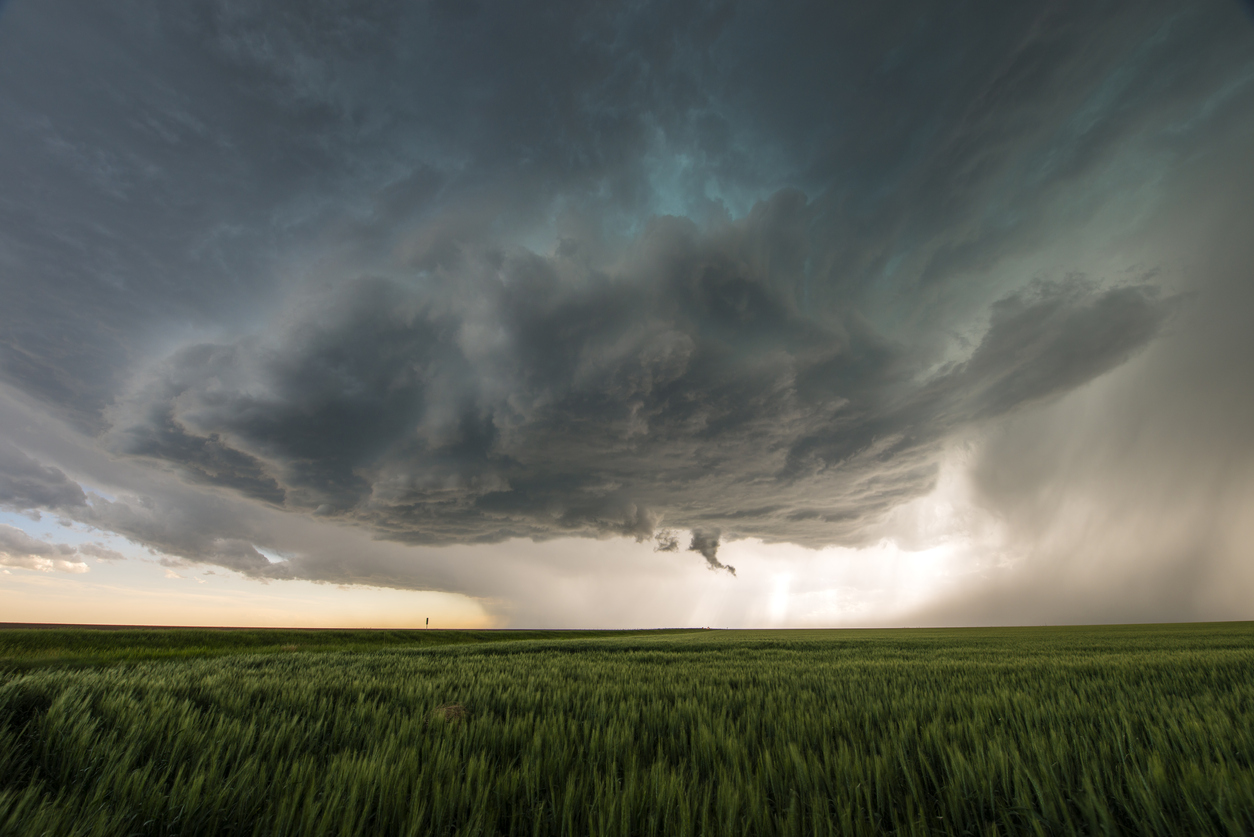Molecular composition of aerosols differs day to night
Submitter
Vandergrift, Gregory W — Pacific Northwest National Laboratory
China, Swarup — Pacific Northwest National Laboratory
Area of research
Aerosol Properties
Journal Reference
Science
Atmospheric aerosols significantly affect climate processes, both directly via their interaction with solar radiation and indirectly by acting as seeds for warm and cold cloud formation. But their molecular composition, especially during the day and night above agricultural fields, is not well understood. Scientists from two U.S. Department of Energy (DOE) Office of Science user facilities and other DOE national laboratories teamed up to probe what are called secondary organic aerosols (SOAs), or those formed through an atmospheric oxidation of freshly emitted aerosols, over agricultural fields in the Southern Great Plains (SGP) in Oklahoma. The team determined that organosulfates within the aerosols were greater during the daytime than during the nighttime over the SGP agricultural region, nighttime aerosols were more liquid-like than those identified during the daytime, and some aerosols could be traced back to urban area sources.
Impact
SOAs are one of the most abundant types of atmospheric aerosols. Understanding their distribution, composition, and variation are important for tracking the progression of climate change, as well as for general understanding of a variety of atmospheric processes. Changes in atmospheric aerosols can affect weather patterns and the temperature of the Earth’s surface, which have significant impacts on crop health, water access, snowmelt, and other important requirements for life on Earth. Findings from this research provide important data for incorporation into models of atmospheric processes, as well as for more completely understanding climate processes.
Summary
A multi-institutional team of scientists collected samples at the Southern Great Plains (SGP) atmospheric observatory in Oklahoma – a field measurement site established by the Atmospheric Radiation Measurement (ARM) user facility, a DOE Office of Science climate research facility. Samples were collected twice each day—once in the daytime and once at night—over one month during the springtime. In addition to chemical make-up, the team obtained supplemental information on wind direction, relative humidity, and complex particle size distribution. Working with the collected samples, scientists from the Environmental Molecular Sciences Laboratory (EMSL), also a DOE Office of Science user facility, used nanospray desorption electrospray ionization with high-resolution mass spectrometry (nano-DESI-HRMS) to characterize the molecular composition of aerosols within the samples. The team identified molecular formulas that featured carbon, hydrogen, and oxygen (CHO), nitrogen (CHNO), and/or sulfur (CHOS, CHNOS). Their findings revealed higher organosulfate proportions during the daytime at 41% compared to at night at 30%. Nighttime aerosols featured increases in CHO, CHNO, and extremely low-volatility organic carbon species. However, due to high relative humidity, the nighttime aerosols phase state was found to be more liquid-like than in the daytime. Additionally, their results indicated that aerosols had traveled far from urban environments. This study provides key insights into organosulfates above agricultural fields by demonstrating a dependence on day-to-night cycles, as well as episodic emissions stemming from anthropogenic sources.


